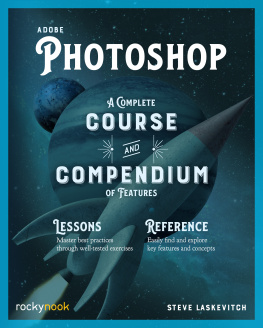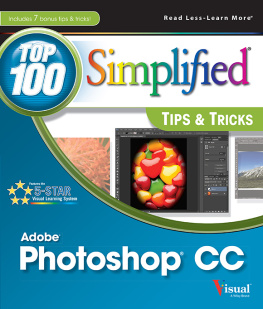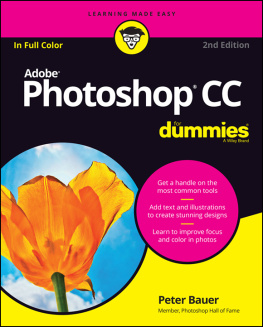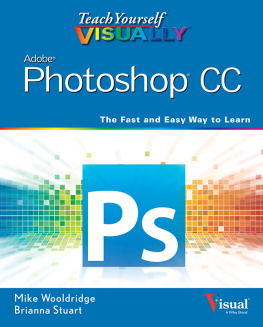Titles in the Digital Imaging Masters Series :
Power, Speed & Automation with Adobe Photoshop
by Geoff Scott and Jeff Tranberry
Color Management & Quality Output: Working with Color from Camera to Display to Print
by Tom Ashe
Tools, Techniques & Workflow for Photographers: Using Art and Science to Realize Your Vision
by Jodie Steen, Andy Batt, and Candace Dobro
Ideas & Inspiration: To Help You Teach and Learn Photography
by Katrin Eismann
Praise for the series:
Sounds like as close to a dream team as one could get without having to resort to spiritual means. I mean if you could get Ansel Adams to do a section on black and white and landscapegreat, but that would require a sance. For the talent living this is a dream team.
Robert Barnett, QBToo (formally PC-Review Online)
We loved our old Time/Life series of photography books. Time for an update. This series could become iconic.
Anne Pfeiffer, Instructor
I think that Katrin Eismanns skill in curriculum development is reflected in the approach. I like the approach a lot; I would find it to be a valuable resource and would expect to turn to the texts often for advice.
Mark Lewis, SUNY Empire State College
I think there is a good balance of technical vs creative.
Carol Tipping, FRPS EFIAP
I think many of the books on the market are software driven, whereas this series is developed to support the photography industry. There is a world of difference between explaining a feature of a software package and explaining how to get an important photography task accomplished through a software tool.
Douglas Barkey, The Art Institute of Pittsburgh
First published 2013
by Focal Press
70 Blanchard Road, Suite 402, Burlington, MA 01803
Simultaneously published in the UK
by Focal Press
2 Park Square, Milton Park, Abingdon, Oxon OX14 4RN
Focal Press is an imprint of the Taylor & Francis Group, an informa business
2013 Geoff Scott and Jeffrey Tranberry
The right of Geoff Scott and Jeffrey Tranberry to be identified as authors of this work has been asserted by them in accordance with sections 77 and 78 of the Copyright, Designs and Patents Act 1988.
All rights reserved. No part of this book may be reprinted or reproduced or utilised in any form or by any electronic, mechanical, or other means, now known or hereafter invented, including photocopying and recording, or in any information storage or retrieval system, without permission in writing from the publishers.
Notices
Knowledge and best practice in this field are constantly changing. As new research and experience broaden our understanding, changes in research methods, professional practices, or medical treatment may become necessary.
Practitioners and researchers must always rely on their own experience and knowledge in evaluating and using any information, methods, compounds, or experiments described herein. In using such information or methods they should be mindful of their own safety and the safety of others, including parties for whom they have a professional responsibility.
Product or corporate names may be trademarks or registered trademarks, and are used only for identification and explanation without intent to infringe.
Library of Congress Cataloging in Publication Data
Scott, Geoff, 1968
Power, speed & automation with Adobe Photoshop / Geoff Scott, Jeffrey Tranberry.
p. cm.
1. Adobe Photoshop. 2. PhotographyDigital techniques. I. Tranberry,
Jeffrey. II. Title.
TR267.5.A3S38 2012
771dc23
2011051838
ISBN: 978-0-240-82083-5 (pbk)
ISBN: 978-0-240-82094-1 (ebk)
Contents
Clear Available Memory With Purge
Creating Actions for Techniques You Learn from Others
Defining Variables
Chapter 8 Scripting Photoshop: Learning the Tools to Start
Scripting Photoshop
Coding Concepts: Conditionals and Decision Making
Building an Installer for Multiple Files to Multiple Locations
Adding a Pop-up Menu
Foreword
Every day most of us rely on and use machines, gadgets, and software, but, in all honesty, we have very little idea about how they really work. Ill be the first to admit that the combustion engine baffles me. Im also a bit envious of the people whose automobiles arent noisy mysteries and who can change the oil without having to make an inconvenient appointment.
When it comes to Photoshop, many of us have never looked under the hood and are just glad that we know where the gas goes, so to speak. If you want to tune-up your Photoshop engine and take control of your image processing with a deep-dive into Photoshops preferences, settings and workspaces; if you want to a learn how to automate Photoshop with actions, batching, and scripting then you are holding the key that will put you into the drivers seat.
Even more important than understanding what the many dials, sliders, and scripts do, youll learn to appreciate that processing one image can be the starting point for processing hundreds, so that you can get back to taking better pictures rather than wasting time slogging through mind-numbing, repetitive image processing.
If all this talk of cars, combustion engines, and scripting make you anxiously lace up your sneakers, then allow me to introduce you to Jeff Tranberry and Geoff Scott, the talented authors of this book. Jeff and Geoff understand Photoshop on a very deep level, as they are both dedicated software developers with many years of experience at Adobe Systems. They wrote this book with the understanding that harnessing Photoshops powerto process many images very quicklyis only meaningful when it allows you to have more time to make better pictures.
Jeff is an artist turned product manager and Chief Customer Advocate for Adobe Systems Digital Imaging Team, which means that he both develops Photoshop and also listens to and works with many customers to understand how they use it. Geoff is an educator and photographer who was a Senior Computer Scientist at Adobe Systems for seven years. He worked in the Digital Imaging group on Photoshop and Photoshop Elements and began using Lightroom nearly a year before the product was available to the public. Both Jeff and Geoff have taught classes, given presentations, and spoken about the tools of digital photography to groups large and small.
I have known both Jeff and Geoff for many years, and it was within my role as the Chair of the Masters of Digital Photography program at the School of Visual Arts in New York City that I was able to formalize our relationship. Jeff developed and taught the Scripting & Automation class for our online program while Geoff was a student in the inaugural year of the online program. As a faculty member in the program, I teach Advanced Imaging Techniques, and you can imagine how intimidated I was to have a former Adobe software developer in my class. But as all his classmates and I quickly learned, Geoff was a gracious and generous student who applied himself fully and creatively to develop his deep photographic talents, whose images grace the pages of this book. As a teacher, Jeff understands how to break down the complex into manageable building blocks of understanding. I am thrilled that they have collaborated so successfully to create this book on a subject matter that many understand to be important, but do not have the deep understanding to articulate. Jeff and Geoff have done that for usand now well all work more quickly and efficiently because of their effort.
Finally, let me tell you something that I tell all of my faculty members, Moving sliders and adjusting parameters is never the end goalcreating compelling images is. So, take the time to apply the knowledge in this book, and it will give you more time to create better and more meaningful images.












